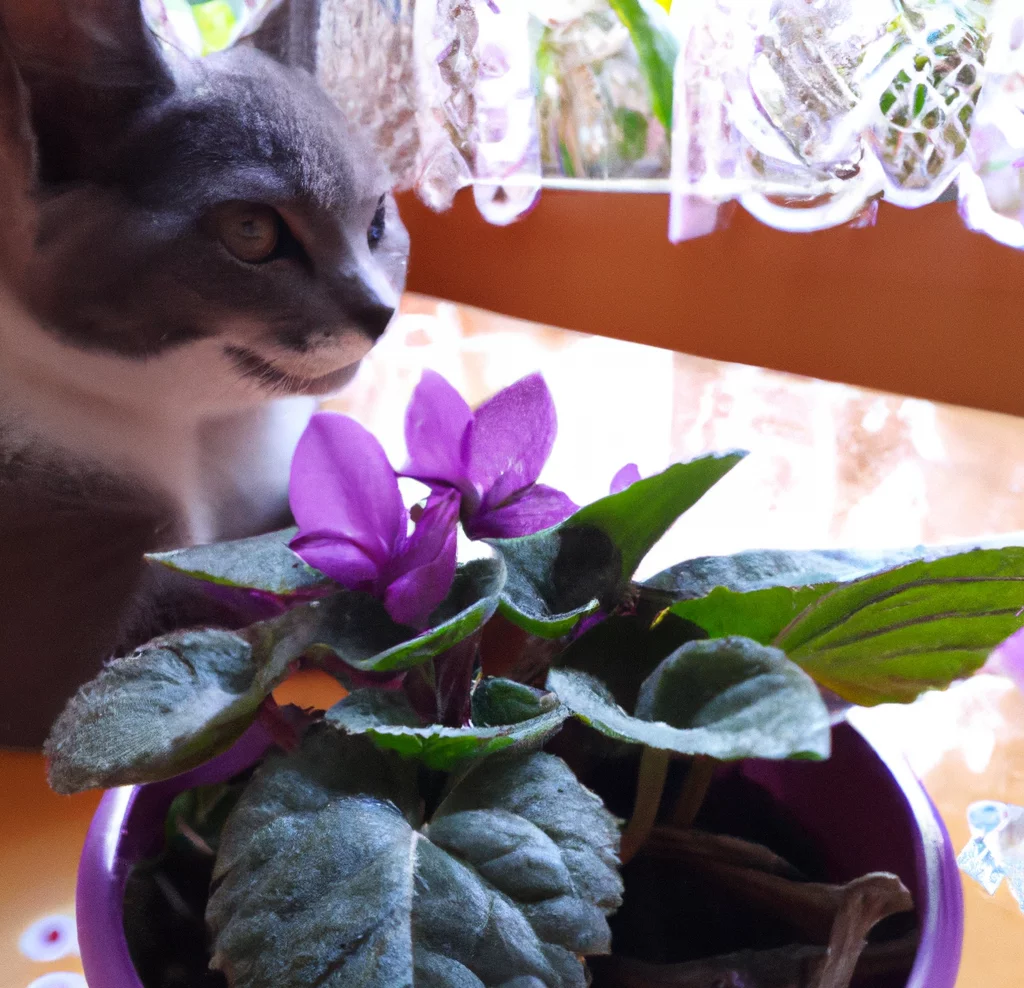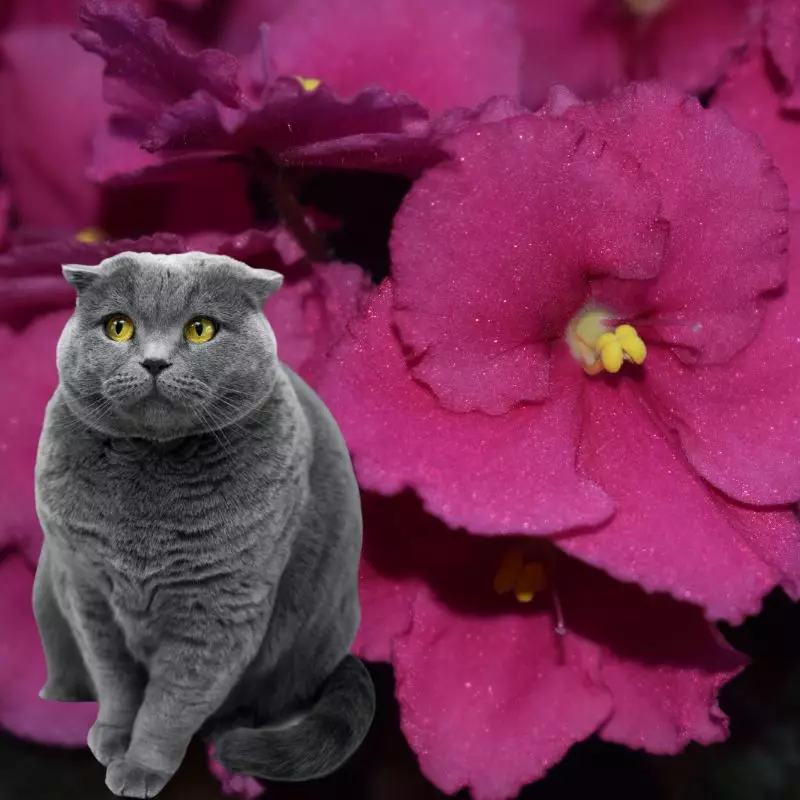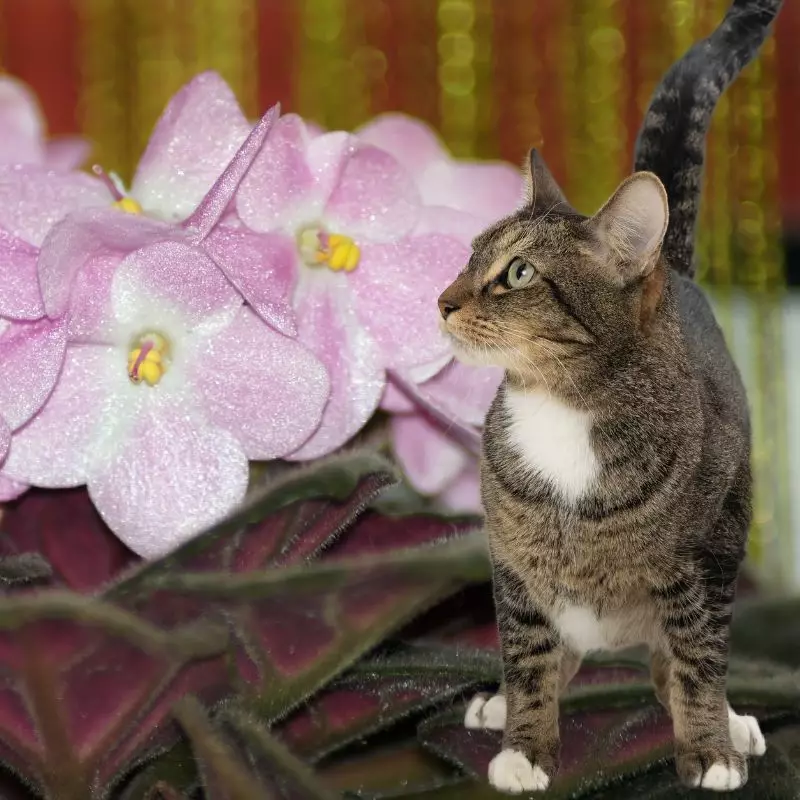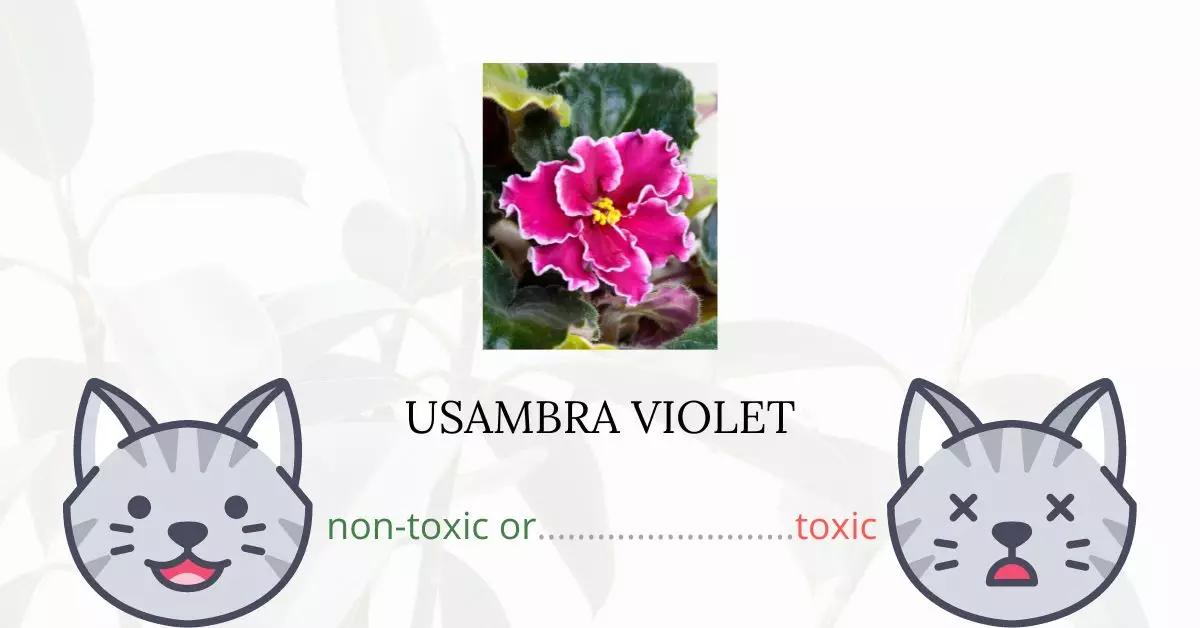No, Usambara violets are not toxic for cats. Even the ASPCA (American Society for the Prevention of Cruelty to Animals) has listed it among non-toxic plants for felines.
This article has been crafted in collaboration with a team of experienced DVMs (doctors of veterinary medicine). With their valuable insights, we aim to provide accurate and up-to-date information on the potential risks associated with various plants, particularly the Usambara Violet, and their effects on cats. Furthermore, our information is bolstered by extensive research from high-authority websites such as ASPCA and PetMD.
Rest assured, the Usambara violet is safe for cats to be around, making it a suitable choice for households with these pets.
Can Cats Eat Usambara Violet?

While it is safe for cats to be around Usambara violets, this does not mean that they can eat the plant regularly. It can be bad for cats to frequently eat or consume large amounts of plants because they are carnivorous species.
Since cats are carnivores, they do not have the ability to digest huge amounts of plants. As a result, they suffer from indigestion and experience vomiting, diarrhea ad abdominal pain among other gastrointestinal symptoms.
Another factor that can cause cats to be sick after eating plants is the plant care products used on growing the plant they ate. Some products like fertilizers and pesticides leave chemical traces on plants that are harmful to cats if they happen to ingest them.
What is Usambara Violet?

The Usambara Violet was discovered in Tanzania’s Usambara Mountains for the first time in 1892. Despite coming from a completely different genus, the common name of the species refers to how much the flowers resemble violets (Viola).
This Gesneraceae plant can grow between 6 and 15 cm in height and 6 and 30 cm in width. They have 2.5 to 8.5 cm long, fleshy, finely hairy, rounded to oval leaves. The flowers are 2 to 3 cm in diameter and have velvety petals with five lobes. They can be violet, purple, light blue, or white, and are produced in clusters of three to ten or more on short stalks.
Due to their small size, numerous blooms, and the wide range of cultivars that are readily available, these flowering plants are very popular. Usambara violets are frequently grown as indoor houseplants, but in some climates, they can also be grown outdoors.
As their native cloud forest habitats are destroyed for agriculture, many of the Usambara violets species and subspecies are threatened with extinction.
Keeping Cats Away From Usambara Violet

In general, cats don’t particularly enjoy lemons and other citrus fruits (like oranges or tangerines). While improper use of orange and lemon essential oils can be harmful, using a homemade zest repellent is safe.
Infuse lemon or orange zest in one liter of boiling water for ten minutes, then strain. Spray the resulting mixture all over the house once it has cooled.
If you want to stop cats from getting into plants because they like to use them as litter boxes, try placing stones over the soil in the pot. Your cat won’t dig in the soil as much if there are stones or pebbles nearby because it will be more difficult.
Plants to Avoid For Your Cats
If you are a cat owner and unsure if the plants growing in your yard are harmful to your cats, check out this list of toxic plants for cats. You can also check our list of non-toxic plants for cats.





